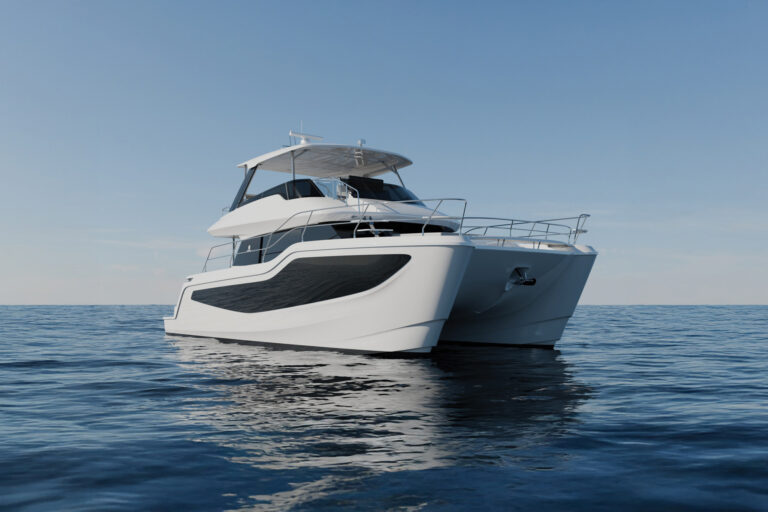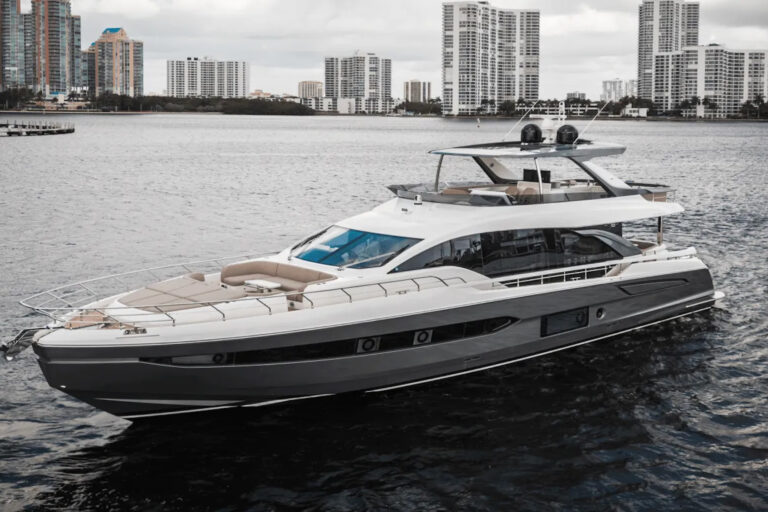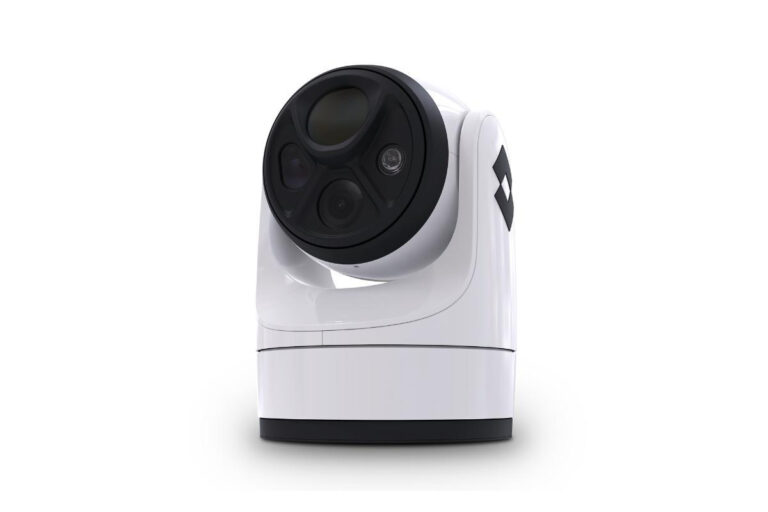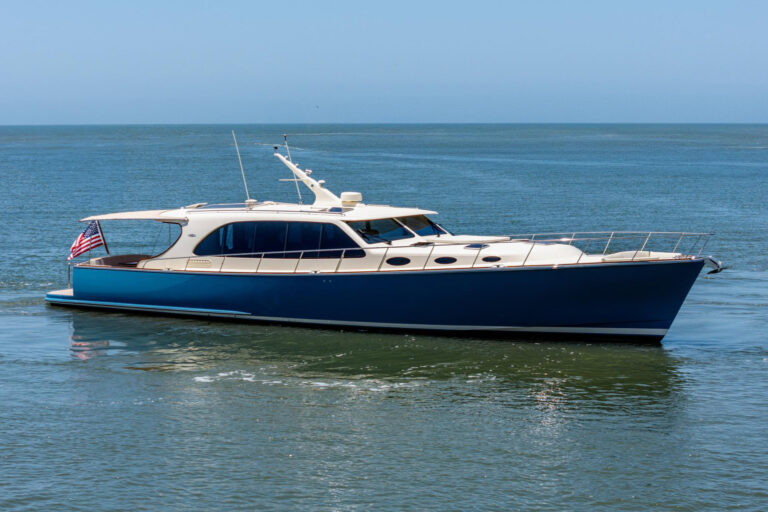A chart plotter mounted in clear view of your helm can offer unsurpassed navigation. Such exposure may be fine for today’s hardy models, but it can also make them vulnerable to theft. When your boat is unattended, it’s best to remove the chart plotter for safe stowage belowdecks. When you’re not using your boat at all, you’d be wise to keep the unit at home. Interphase’s new chart plotters, the Chart Master 169CS and 169CSi, meet the demand for quick installation and removal with mounting systems that eliminate cables and connectors.
I began my evaluation of the 169CS by securing its adjustable mounting base near the helm with a couple of pieces of double-sided foam tape. (No one should leave port without a supply of this tape on board.) It took only a few minutes to connect the five wires for the separate DGPS WAAS receiver cable to the mounting bracket cable and position the antenna. (This is not required of the 169CSi, since it has an internal DGPS receiver/antenna.) Installation was complete when I plugged the two power leads into the boat’s 12-volt DC system.
Anyone who has used a computer, PDA or similar menu-controlled plotter will find initial operation of the 169CS a snap. Taking full advantage of the unit’s considerable capabilities, however, requires operating the plotter for a few hours with the 100-plus-page owner’s manual in hand. The unit has eight dedicated function keys, a four-way cursor control, a toggle for zoom-level selection and five soft keys, whose functions are identified by on-screen legends. In the lower-right corner of the unit’s faceplate is a rubber-covered slot for a C-Map NT or NT+ chart cartridge. (A small USB connector socket to the right of the slot serves no present function, but it does hint at some future use.)
Though the test unit had been last used on the West Coast, the 169CS’s external DGPS receiver provided 3-D positional information for the waters off Florida after only a couple of minutes. Subsequent GPS data-acquisition times were even shorter.
The unit’s 7-inch, 480-by-234-pixel color LCD met the sunlight readability challenge quite well, and horizontal and vertical adjustments to the mounting bracket eliminated reflections. Colors were bright, and images were adequately detailed. I checked the visibility of the screen while wearing polarized sunglasses and found it to be satisfactory. I later confirmed that the unit’s lighting, for the screen and keypad, stood up to a challenging nighttime operating environment.
With the possible exception of the screens used on large ships, displays of all chart plotters show areas far smaller than those covered by paper charts. A chart plotter’s relatively small size places three demands on its design: You must be able to rapidly zoom in and out, smoothly pan across for access to off-screen areas and quickly de-clutter the display. The 169CS’s zoom function was up to the task, allowing for multiple, rapid changes. The pan operation was even and responsive. The 169CS simplifies de-cluttering by providing four preprogrammed data-selection menus: “full, “simple, “fishing and “low, plus a custom mode that manages the 25 information headings in C-Map’s NT+ cartography. The plotter’s software automatically repositions blocks of data to avoid obscuring information in proximity to the vessel. The unit stores up to 500 waypoints or marks, each with a six-character identifier and a choice of symbol, lat/lon and display color. Up to 25 routes, each comprising up to 50 points, can be assembled from the data you’ve stored.
As mentioned, the ease with which a chart plotter can be mounted and removed is important, especially if it’s installed in an exposed area. Mounting brackets make it easy to remove most chart plotters, but connecting and disconnecting cables for the power, GPS and sounder can be problematic. Small multi-pin connectors may not stand up to constant removal and reinsertion, for instance, and there is usually no provision for protecting exposed connector pins from the elements when they are not mated with their sockets. The 169CS and 169CSi provide an elegant solution to these challenges. Each unit’s 12 electrical connections are built into a strong plastic mounting base, automatically making contact with the plotter when it is lowered into the bracket. The contacts, gold-plated to prevent corrosion, are “wiped by the matching contacts in the plotter each time the unit is inserted or removed. No wires or connectors are exposed. A slip-on rubber cover protects the base’s electrical connector surfaces when the plotter is removed.
The company provides a mounting template and hardware for installing the plotter on the surface of an instrument panel. For this type of installation, the upper part of the mounting base is separated from its foot. Though the 169CSi, with its built-in DGPS receiver/antenna, may work in some surface-mount installations, the 169CS, with its external antenna, is more appropriate for mounting in this fashion.
The receiver I used with the 169CS fits on a standard 1-inch-diameter, 14-thread-per-inch pipe or, with the base adapter removed, on any flat surface. The mounting adapter did not have a slot, which would have provided an exit for the antenna cable (and kept me from having to thread the cable through the length of a mast). A few minutes with a rotary tool, though, should remedy this shortcoming.
The quick-connect mounting system also allows you to use the Chart Master 169CS on another boat, or
at home for planning your voyage. For this, a second mounting base, available for $39, is a worthwhile option. The unit’s modest 12-volt DC power requirement-less than 1 ampere-can be supplied by a 120-volt AC source using an inexpensive plug-in transformer/rectifier. Price for the 169CS: $1,600; price for the 169CSi: $1,700.
Contact: Interphase Technologies Inc., (888) 777-6627; www.interphase-tech.com
Click here to buy Interphase products.









